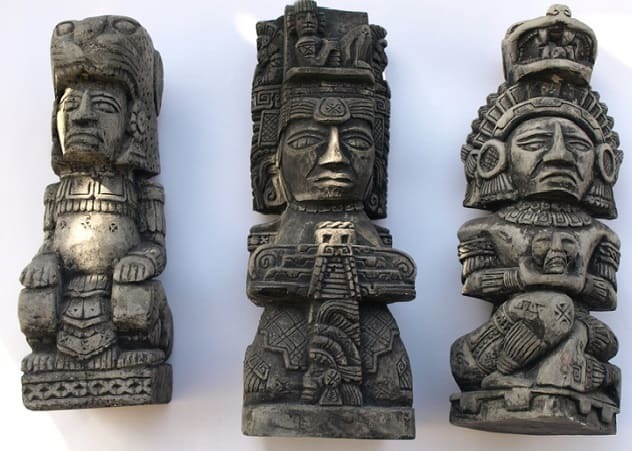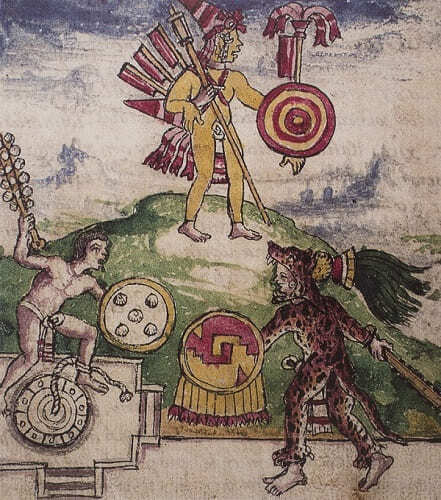

The Aztec sacrifice practice is often viewed with horror and shock by people today, but it was a central aspect of Aztec religion and society. The practice of human sacrifice was part of a larger system of tribute and religious offerings that helped to maintain the social order and maintain the balance of the universe. In this essay, we will explore the origins, purpose, and methods of Aztec sacrifice.

The origin and purpose of Aztec sacrifice is a topic of much debate among scholars. Some historians believe that the practice has roots in earlier Mesoamerican cultures, while others argue that it was a unique development of Aztec religion and society. What is clear, however, is that sacrifice was a central part of Aztec religious beliefs and practices, and that it served a number of important social and political functions.
One of the key purposes of Aztec sacrifice was to appease the gods and maintain the balance of the universe. The Aztecs believed that the gods needed regular offerings of blood and hearts to maintain their strength and power, and that this was necessary to prevent natural disasters, disease, and other calamities. Sacrifice was seen as a way to restore the balance of the universe and to prevent disaster.
Another important purpose of Aztec sacrifice was to reinforce social hierarchy and maintain political power. The victims of sacrifice were often prisoners of war, criminals, or slaves, and they were selected for their physical perfection. The ritual of sacrifice was a way to assert dominance over these individuals and to reinforce the power of the ruling elite.
In addition to human sacrifice, the Aztecs also offered animal and plant sacrifices to the gods. The most common animals used were turkeys, dogs, and ducks, and the most commonly offered plants were flowers and maize. These sacrifices were an important part of the Aztec religious calendar and were often accompanied by elaborate rituals and ceremonies.
Victims of human sacrifice were usually prisoners of war, criminals, or slaves. They were often selected for their physical perfection, and some were even trained for their role in the ritual. Preparing the victim was an important part of the ritual. The victim was usually a prisoner of war or a slave, and they were selected for their physical perfection. They were often treated well before the sacrifice, and given the opportunity to eat and drink to prepare their bodies for the ritual. The victim was then dressed in elaborate costumes and ornaments, symbolizing their role as an offering to the gods.

Aztec gladiatorial fighting with prisoners. Tlacaxipehualiztli or Flaying of Men ritual at Duran Codex. National Library, Spain
The actual act of sacrifice was a complex ritual that involved a number of specific steps. The victim was often led up a temple or pyramid and then had their chest cut open. The heart was then removed and offered to the gods, while the rest of the body was often dismembered and eaten by the priests and other participants in the ritual. The blood was also seen as an important part of the sacrifice, and was often sprinkled on statues or other sacred objects.
The death of the victim was seen as a necessary part of the sacrifice. The Aztecs believed that the victim's blood and heart were necessary to maintain the balance of the universe and to prevent natural disasters and other calamities. The death of the victim was seen as a sacrifice that the gods required in order to maintain their power and strength.
The practice of human sacrifice was a central aspect of Aztec religion and society, and it played a crucial role in maintaining the social order and the balance of the universe. While the practice may seem barbaric to us today, it was seen as a necessary and important part of Aztec culture. The study of Aztec sacrifice has helped us to understand the complexities of this society, and it continues to fascinate and intrigue scholars and the public alike. As historian Felipe Fernandez-Armesto once said, "The history of Aztec civilization is like the history of the universe itself: awe-inspiring, terrifying, and infinitely complex.
Q1. What was the role of the priests in Aztec sacrifice?
Ans. The priests played a central role in Aztec sacrifice. They were responsible for performing the ritual of sacrifice and ensuring that it was done correctly. They also played a key role in selecting the victims and preparing them for the sacrifice.
Q2. How did Aztec sacrifice impact their relationship with other cultures?
Ans. The practice of Aztec sacrifice was seen as barbaric and cruel by many other cultures, and it contributed to the negative reputation of the Aztecs in the eyes of outsiders. The practice may have also contributed to conflicts with other cultures, as the Aztecs often used their military power to acquire victims for sacrifice.
Q3. Did all Aztecs support the practice of sacrifice?
Ans. While sacrifice was a central part of Aztec religion and society, not all Aztecs supported the practice. Some individuals may have objected to the practice on moral or ethical grounds, or may have been uncomfortable with the violence and brutality of the ritual.